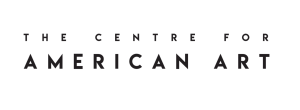Nearly one hundred years ago, artists without formal training “crashed the gates” of the elite art world, as their paintings of American life and fantastical scenes derived from their imaginations began appearing in major museums. This talk draws upon Gatecrashers: The Rise of The Self-Taught Artist in America published in 2020 by the University of California Press and adapted into an exhibition on view now at the High Museum of Art, Atlanta.
Both projects privilege the work of John Kane, Horace Pippin and Anna Mary Robertson “Grandma” Moses who were the most celebrated artists during this first wave of mainstream art world interest. This period lasted from roughly 1927, when Kane succeeded in placing a work in the highly competitive Carnegie International, to 1950, when attention to Moses’s work abroad infuriated critics at home. The exhibition also delves into the work of more than a dozen of their peers, including Josephine Joy, the first woman painter to have a solo exhibition at New York’s Museum of Modern Art (MoMA) and Morris Hirshfield, whose own 1943 MoMA exhibition contributed to the schism that would isolate self-taught artists from the narratives of modernism of which they were once a part.
Both the exhibition and the book demonstrate how the rise of the self-taught artist in America tracked with larger social and cultural forces, including the longstanding search for uniquely American creative excellence; the enthusiasm for working-class artists nurtured by Great Depression-era populism; and the negotiation of national identity in an era when anti-immigration and segregationist sentiment challenged who could be presented as representatively American.
While some of culturally nationalist and primitivist discourses that sustained the success of this first generation of gatecrashers have been critically undermined and deserted long ago, the vital role that self-taught artists play in diversifying the American art canon continues today. Jentleson will conclude her talk with remarks on how the reception of self-taught artists has changed dramatically since the interwar period while also maintaining some elements of its original character.
Katherine Jentleson, PhD, is the Merrie and Dan Boone Curator of Folk and Self- Taught Art at the High Museum of Art, Atlanta. Her most recent exhibitions, Gatecrashers: The Rise of the Self-Taught Artist in America and Really Free: The Radical Art of Nellie Mae Rowe open to the public in Atlanta in Fall 2021 and will travel nationally. Dr. Jentleson is the recipient of awards and fellowships from Duke University, where she earned her doctorate in Art History, the Smithsonian American Art Museum, the Archives of American Art, and the Dedalus Foundation. Since joining the High, she has overseen half a dozen exhibitions and grown the collection by more than five hundred objects, including major acquisitions of work by Thornton Dial, Lonnie Holley, the Gee’s Bend quilters, and Henry Church, many of which debuted in the newly expanded and thematically integrated Folk and Self-Taught Art galleries as part of the Museum’s 2018 reinstallation.
Organised by Professor David Peters Corbett (The Courtauld) and Dr Tom Day (The Courtauld).
